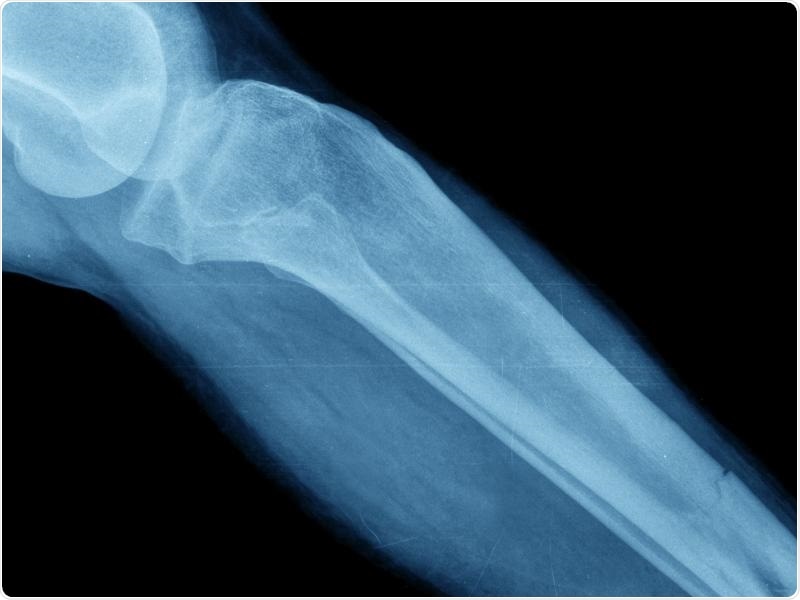When enzymatic processes decline inside the body, they can increase the risk of bone fracture in a person. This latest insight was recently reported in the eLife journal by an international team of researchers and engineers headed by Deepak Vashishth, the director of the Center for Biotechnology and Interdisciplinary Studies (CBIS) at Rensselaer Polytechnic Institute.

Image Credit: Rensselaer Polytechnic Institute.
Enzymatic processes are important to any number of chemical reactions that take place inside the body, such as the production of the extracellular matrix inside the bone that is crucial for mechanical support.
Phosphorylation is one of those crucial enzymatic processes, in which the phosphoryl binds to a protein and is important for cellular control. Such a process performs a key role in several diseases, but scientists did not know if it changed the organ function and tissue integrity, until now.
In this article, the team investigated a protein, called osteopontin, which plays a key role in keeping the matrix together. The researchers designed a process through which phosphorylation—or its counterpart dephosphorylation—could be induced in bones from genetically engineered mice, that is, some that had osteopontin, while others that did not.
The team compared the outcomes from the two groups and observed that fracture toughness—a measure of the mechanical strength of a bone—decreased with dephosphorylation and increased with osteopontin phosphorylation.
More precisely, phosphorylation improved crosslinks and increased the attraction between the charged groups on bone mineral and osteopontin, rendering the bone stronger and its fracture more difficult.
This is the first study that lays down that phosphorylation in bone matters, particularly how it assists bone in releasing energy, and that loss of this modification is bad for bone.”
Deepak Vashishth, Director of the Center for Biotechnology and Interdisciplinary Studies, Rensselaer Polytechnic Institute
Furthermore, the team investigated the impact of osteopontin phosphorylation levels in hyperphosphatemia and hypophosphatemia, which rare bone diseases and linked to skeletal deformities. Vashishth added that osteopontin phosphorylation levels reduced in both diseases, a finding that sets the foundation for more analysis.
Another promising discovery was that these levels do change with diseases in bone. Is phosphorylation directly affecting the fracture propensity of bones in these diseased conditions? And what therapeutic tools can we use to fix this? These are the questions that we want to investigate.”
Deepak Vashishth, Director of the Center for Biotechnology and Interdisciplinary Studies, Rensselaer Polytechnic Institute
In the spirit of the New Polytechnic—the model that fuels education and research at Rensselaer Polytechnic Institute—the new study was extremely collaborative across various disciplines.
Vashishth and his laboratory team have collaborated with scientists from McGill University in Canada, the University of Southampton in the UK, the University of Patras in Greece, Aarhus University in Denmark, and Vienna University of Technology in Austria. All the researchers brought a different skill and part of this puzzle to the work.
The researchers’ discoveries may also be used on analogous processes inside other connective tissues and potential therapeutics to counteract the abnormal levels of osteopontin phosphorylation.
This is not just specific to bone, because phosphorylation is a more ubiquitous change in other tissues in the body. Osteopontin is not only in bone, it’s in other tissues in our body, like our kidneys and several other places. This research can also shed light on other things that can happen throughout the body.”
Deepak Vashishth, Director of the Center for Biotechnology and Interdisciplinary Studies, Rensselaer Polytechnic Institute
Source:
Journal reference:
Bailey, S., et al. (2020) The role of extracellular matrix phosphorylation on energy dissipation in bone. eLife. doi.org/10.7554/eLife.58184.